Light is fundamental to every aspect of our lives, from our ability to carry out tasks effectively, to our overall comfort and wellbeing. The better we can control it, the more it can enhance our experience indoors.
Enter optics.
Through reflection and refraction, optics enable lighting designers and occupants to place light where they want it, as well as keep it away from where they don’t.
Using optical systems, lighting designers can shape a wide distribution of light into a selection of beams ranging from narrow spot, spot, flood, wide flood, and so on. From there, they can choose the best beam for the object they want to illuminate. For example, you wouldn’t put a wide flood light on a small object—you’d use a narrow spot for maximum focus.
Even the most impeccably selected furnishings, finishes, or other architectural and decorative elements can fall flat if they’re not illuminated properly. Conversely, well-placed light can transform even the most ordinary room into a warm and inviting space with the perfect ambiance. In short, lighting optics create the dynamic contrasts that bring a space, and everything inside of it, to life.
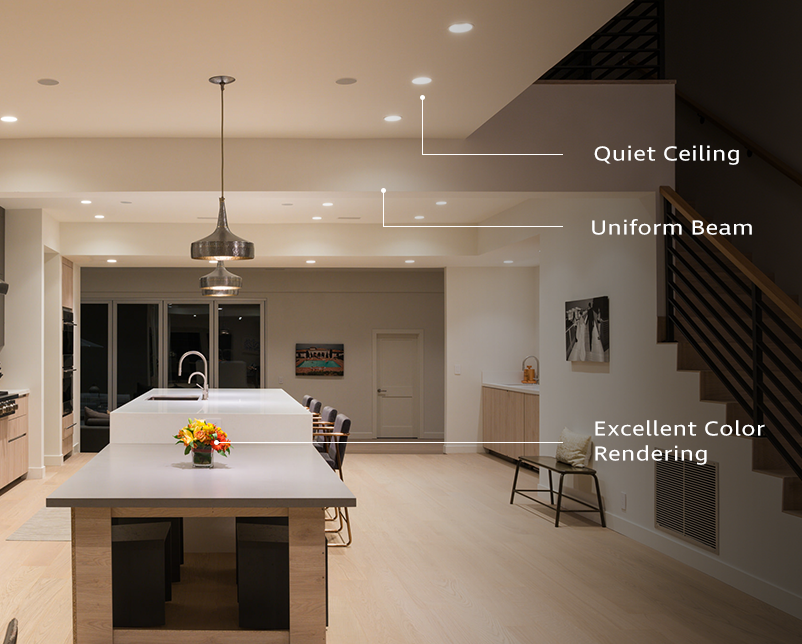
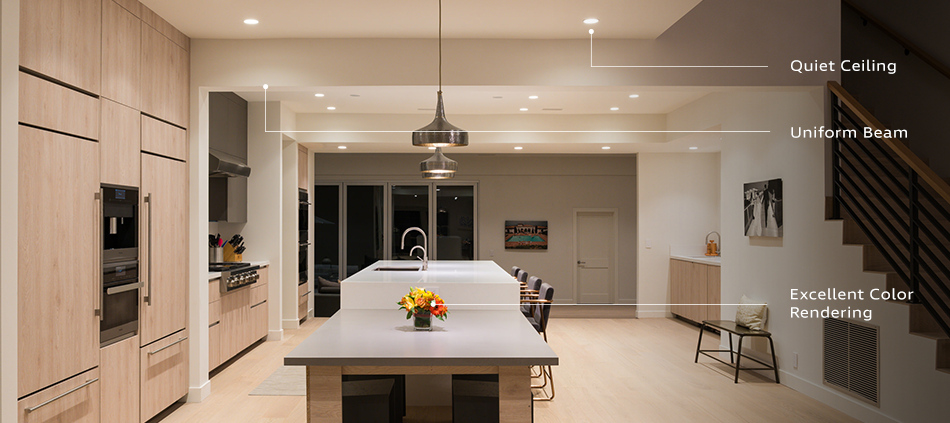
High quality light is only as good as the optical system that directs it.
Historically, lighting manufacturers have provided designers with a few different methods for shaping and controlling light. One common example is a parabolic aluminized reflector (PAR) which cups the light source and shapes the beam via reflection. Another method frequently used with LEDs is a total internal reflection (TIR) lens, which is placed on top of the LED to shape the beam.
These traditional methods are not developed to handle modern, multi-colored light sources in architectural applications. Instead, these traditional PAR-type reflectors and TIR optics are developed to shape only a single color point source of light. Applied to modern, colored light sources, these optics produce an undesired effect called “color breakup” that can occur as the individual colored sources are not set in the center of the optic.
Typically, multi-colored LED systems use an array of LEDs placed next to each other on a circuit board. The further apart the LEDs are distributed from the center of the optic, the more dramatic the color breakup will be. The result can range from colored “rainbow” effects in the beam as it lands on flat surfaces such as walls and floors, to individual colors being visible when one looks up at the lights source. Both of these effects detract from the perceived quality of the space and start to feel too “theatrical.”
Ketra takes a unique approach to optics to generate the highest quality light possible. We start with a tightly packed cluster of LED die encapsulated in our proprietary silicon dome. This combination of tightly packed die and dome optic result in a small point source of light that is pre-mixed to a uniform color.
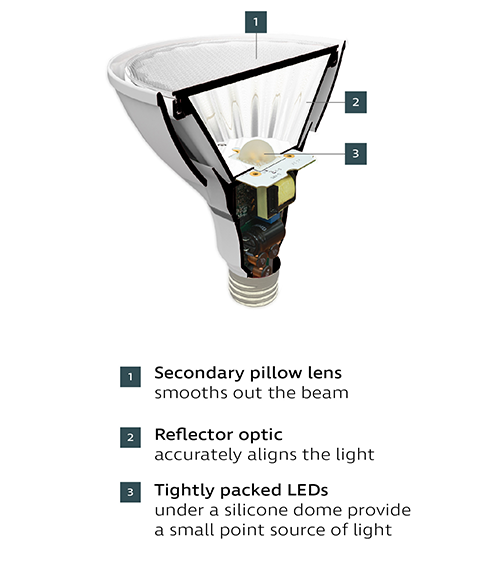
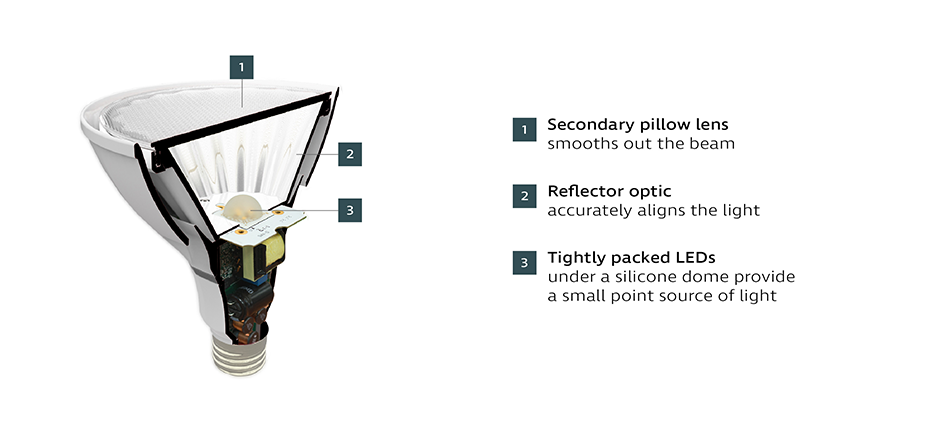
Three cornerstones of Ketra's patented TruBeam optical system.
From there we employ a reflector optic to collimate the light and a secondary pillow lens optic to smooth out the beam. By combining both a reflector and a lens, Ketra fixtures are able to produce the maximum range of beam spreads, all of which preserve uniform color and intensity across the beam.
The result is a beam of light that, when grazing a wall, has a uniform beam that is free of “scalloping,” rainbow color breakup, and other visible distortions.
Evaluating optical performance can be performed with a simple test to check uniformity of color and intensity of light.
Low-quality optics can result in poor quality illumination, which could manifest itself as non-uniform color or intensity across the surface or object being illuminated. This will distort the color rendering and overall appearance of a surface or object.
Ketra has reinvented lighting optics to address these challenges and support modern LED solutions like our own Dynamic Spectrum light sources. Ketra's TruBeam optical system delivers high quality light exactly where you want it, upgrading the visual appeal and the experience of any space.
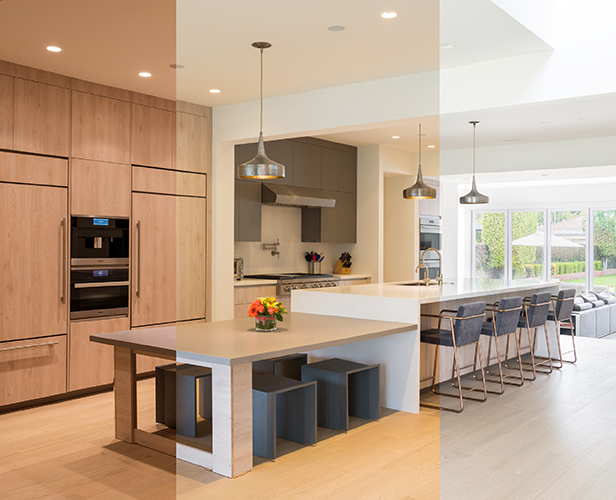
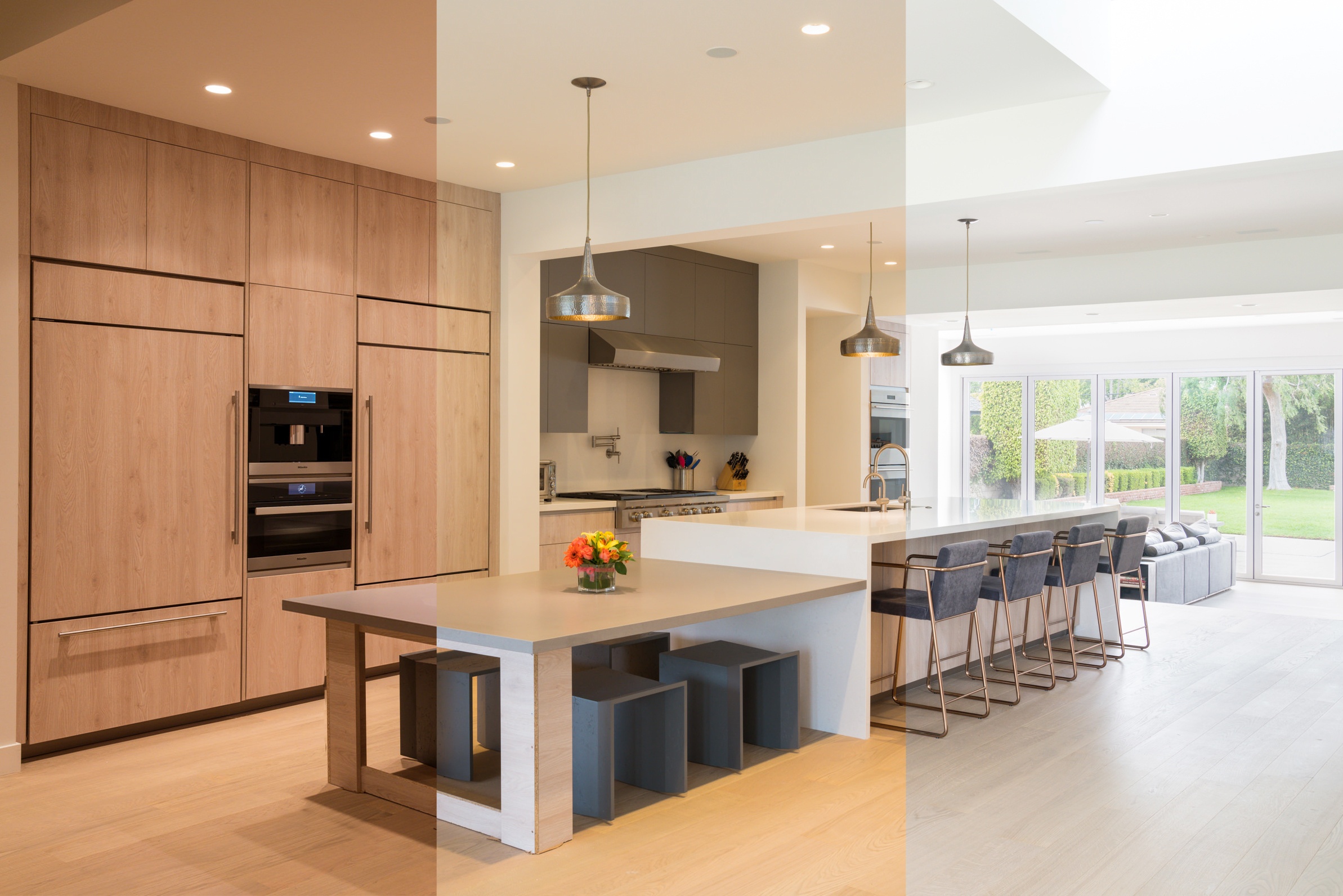
Ketra TruBeam produces smooth, uniform beams of high quality, color tunable light any time of day.
To learn more about the control and flexibility Ketra’s TruBeam can bring to your next project, reach out to one of our specialists today by completing the form below.
24/7 Technical Support:
1-844-LUTRON1 (588-7661)
lightingsupport@lutron.com
Customer Service:
Monday-Friday 8am- 5pm EST
1-844-LUTRON1 (588-7661)
The Ketra logo, Ketra, TruBeam, Color Lock, and Calibration360 are trademarks or registered trademarks of Lutron Electronics Co., Inc. in the US and/or other countries.
©2024 Lutron Electronics Co., Inc. All rights reserved.
Get inspired with all the best from Lutron and Ketra: exclusive news, project features, and more.